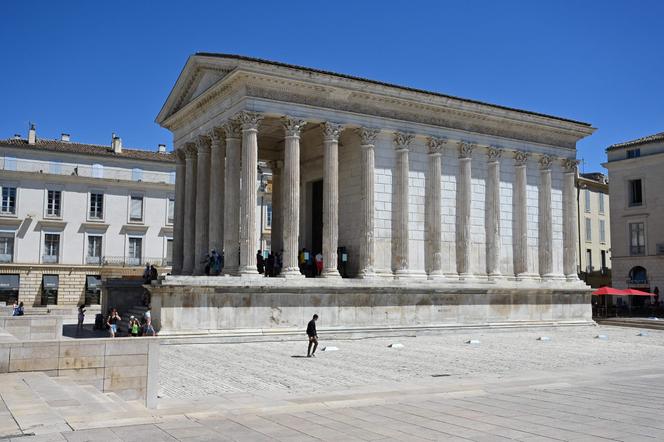


Two new French sites have been added to the UNESCO World Heritage List. It was decided unanimously by the World Heritage Committee, at a meeting in Riyadh, Saudi Arabia, on Monday, September 18, that the Maison Carrée in Nimes, a Roman temple built in the 1st century AD, should become the 51st French site entered on the United Nations Educational, Scientific and Cultural Organization (UNESCO) list. It was announced on Saturday, September 17, that Mount Pelée and the peaks of northern Martinique had also been added to the prestigious list.
This recognition has long been a goal of the city of Nimes. As an ancient commercial and cultural crossroads that reached its peak under Augustus, the former Roman colony applied for the inscription of all its monuments to the list in 2018. Considering the site's proximity to modern monuments, the experts weren't convinced of its exceptional character. As a result, the southern city refocused its bid on the Maison Carrée, which reopened after renovations in 2022. It was a winning bet for mayor Jean-Paul Fournier, who attended the Riyadh award ceremony.
As the deputy mayor in charge of ancient heritage Mary Bourgade said, "This decision is the long-awaited recognition of the wealth of Nimes' ancient heritage. It's the reward for years of work." Tourism will increase, and the World Heritage listing will be a "real growth lever for the city," with "significant economic spinoffs," according to the municipality.
A World Heritage Committee designation was also awarded to Martinique's Mount Pelée volcano and the Pitons in the north of the overseas territory island due to their exceptional character. According to the experts, "the representation of volcanic features, materials, and processes" conferred global importance on the site. It was hailed as a powerful gesture in favor of biodiversity preservation by France's foreign ministry. There are several globally threatened animal species on the site, including the Martinique Allobate, a very rare frog, the Couresse Snake, and the Martinique Oriole, a bird endemic to the area.
During its 45th session, taking place in Riyadh until September 25, the World Heritage Committee will assess the candidacy of some 50 sites – either cultural, natural, or mixed. In Tunisia, the heritage of the island of Djerba, renowned for its religious mix and whitewashed homes, has been given special attention. The site consists of seven zones and 24 monuments, including Roman and Carthaginian ruins, and synagogues, churches, and mosques fortified by the Ibadites. During the Jewish pilgrimage in May, the Ghriba synagogue – Africa's oldest – was the target of an attack that left five people dead.
You have 43.57% of this article left to read. The rest is for subscribers only.
